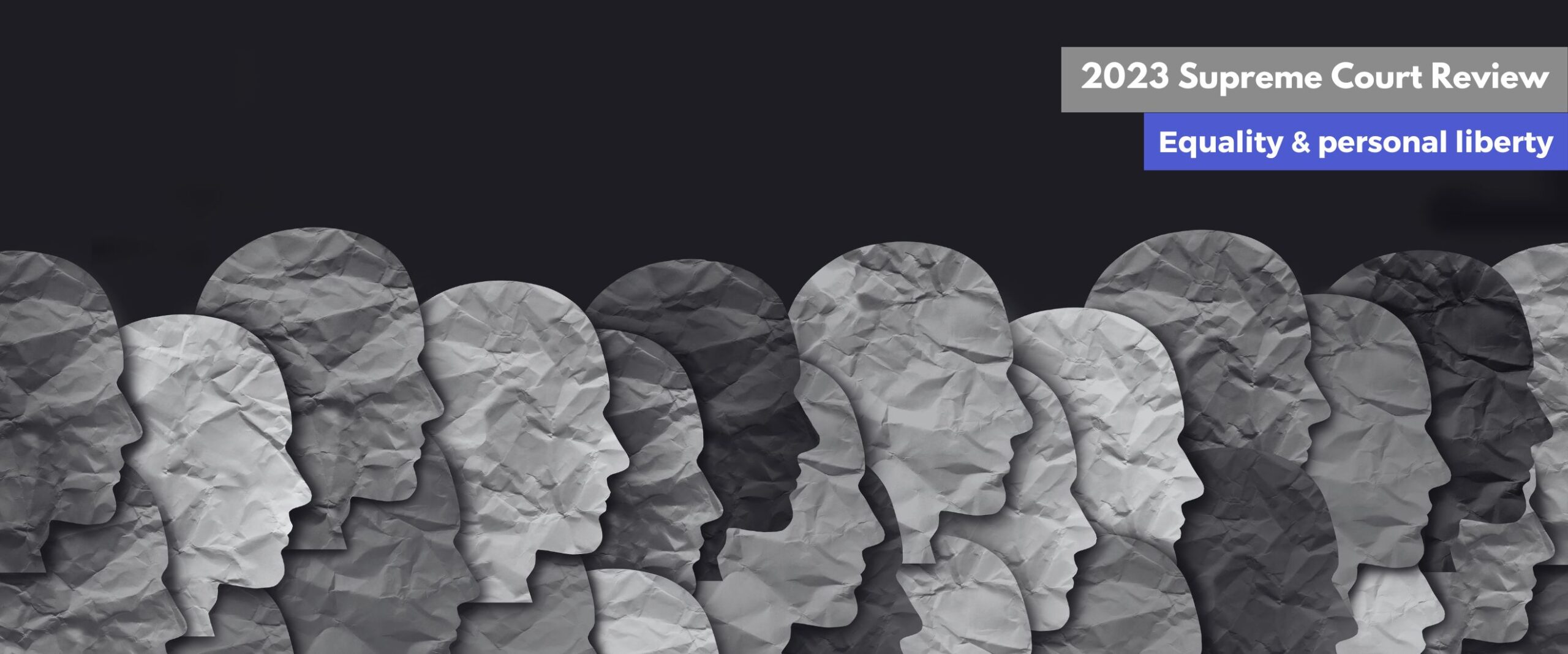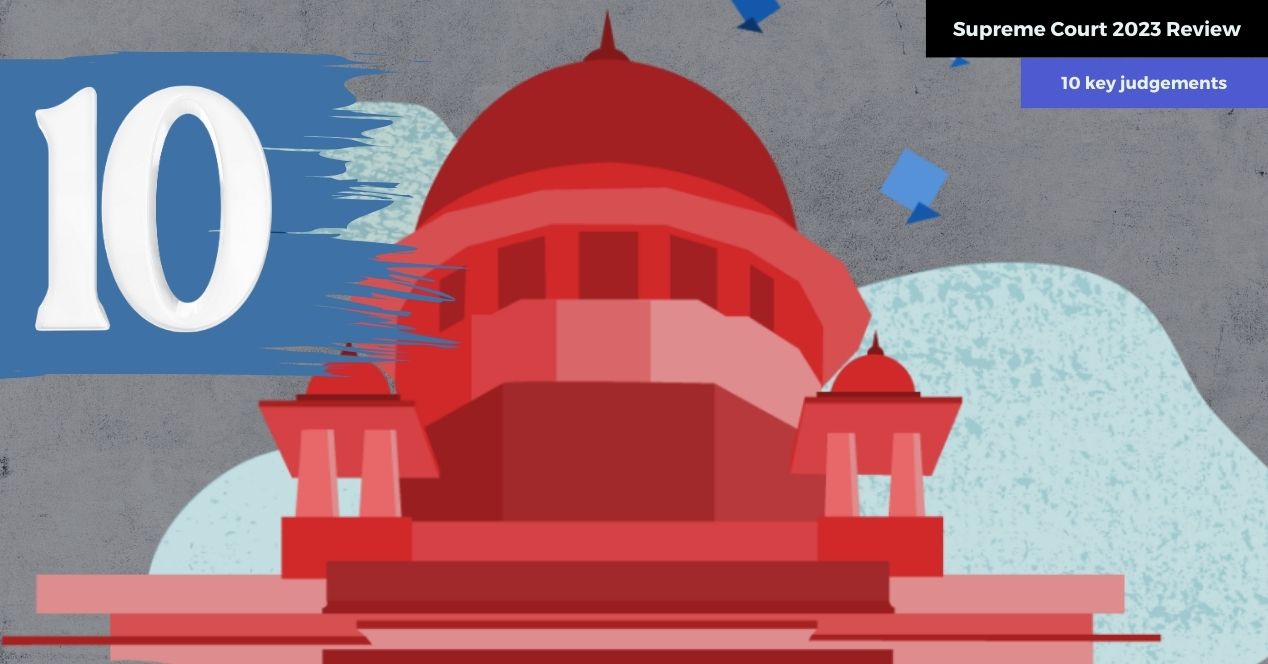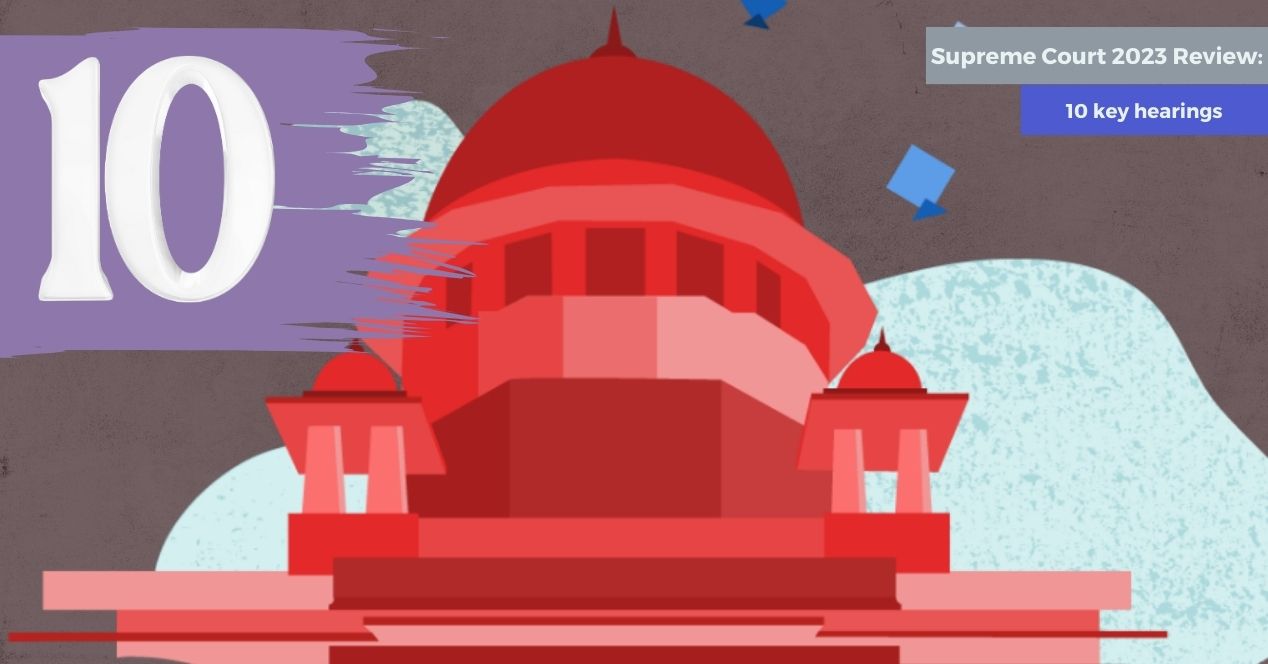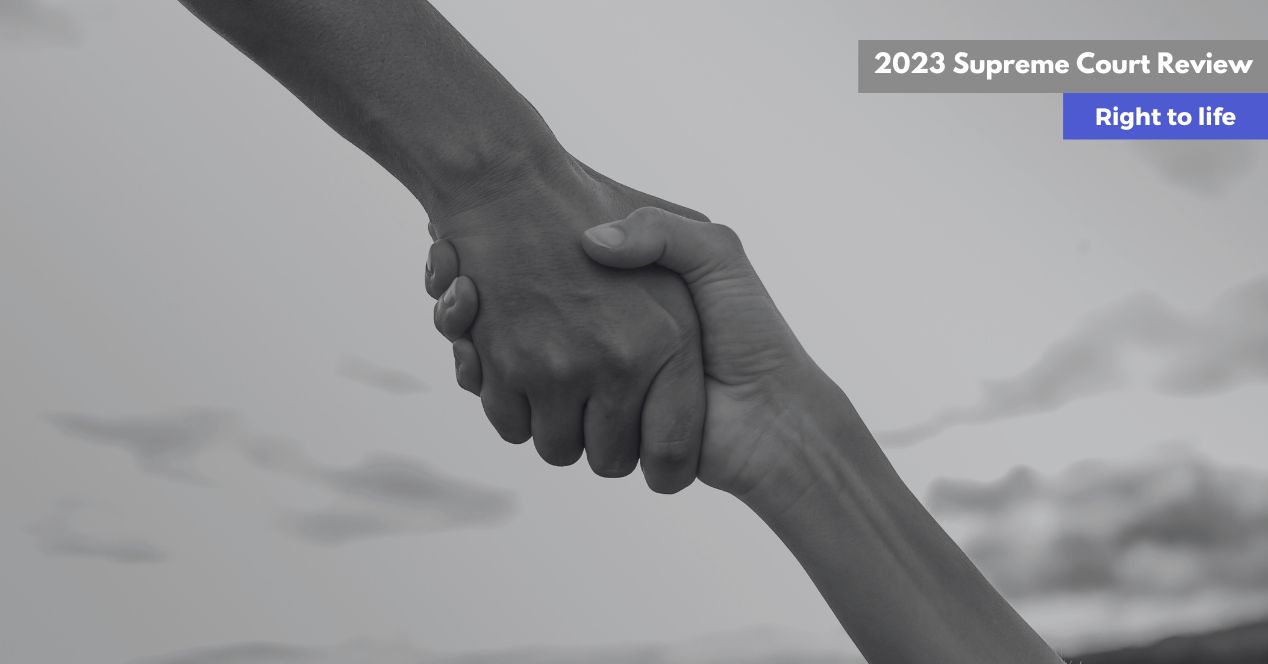Analysis
Supreme Court Review 2023: Gender Discrimination and Personal Liberty
In a concerning year for personal liberty, the Court took on gender stereotypes but undid its progressive jurisprudence in an abortion case

In 2023, the Supreme Court had to contend with several critical questions that touched upon equality and personal liberty.
It took some strides towards challenging gender-based discrimination in some of its decisions—the Court challenged the patriarchal mode of thinking in a death penalty case and outlawed a discriminatory tax provision that violated the rights of Sikkimese women. On the administrative side, the Court released a gender stereotypes handbook that asked litigants and lower courts to avoid language which endorses “archaic ideas with patriarchal undertones.”
But in one of the most significant judgements of the year, the Court did not recognise sexual minorities’ right to marry. That decision sticks out like a sore thumb in the Court’s anti-gender discrimination report card. We’ve covered that case in our end-of-year Marriage and the Supreme Court review.
On personal liberty, there were some concerning decisions.
In a medical termination of pregnancy case, it denied an abortion to a woman grappling with mental health issues. It also held the mere membership of an unlawful organisation was enough to sustain a prosecution under the terror law.
Two steps back after a step forward in MTP law (X v Union of India)
A pregnant woman approached the Court under Article 32 for permission to terminate her pregnancy due to post-partum depression and financial constraints. The petitioner had lactational amenorrhea and could not discover her pregnancy until twenty weeks had passed. Hospitals had refused her request because the Medical Termination of Pregnancy Act, 1971 allowed termination up to 24 weeks.
The Court permitted the termination when the medical board constituted by All India Institute of Medical Sciences cleared the abortion. But, a day after this order, Assistant Solicitor General Aiswarya Bhati received an email from a member of the board which suggested that the foetus had a strong case of survival. The matter was then moved to a different Bench at the request of the Union’s counsel.
This time, the Court, rejected the request for a medical termination, observing that the protections under Section 3(2B) were not attracted (sexual assault survivors, minors, widowed or divorced persons, disabled persons, mentally ill persons, foetal abnormality or pregnancy during humanitarian crises). The Court rejected the petitioner’s submissions concerning suicidal tendencies, postpartum depression and psychosis.
The judgement marked an important turn in abortion jurisprudence in India. Some have argued that this decision contradicts the Court’s own progressive jurisprudence on abortion in X v Principal Secretary (2022), which had noted that the woman’s decision to carry her pregnancy is grounded in her bodily autonomy. In the present case, the observers noted, “the right-based discourse has been conveniently by-passed by the idea that a woman’s choices are everyone’s business.”
Victim being a sole male child not an aggravating factor for sentencing (Sundar v State by Inspector of Police)
The accused, who had been convicted of kidnapping and murdering a seven-year-old, had filed a review petition against a death penalty handed down by a trial court. An earlier review had been rejected by the Supreme Court in chambers. However, given the precedent set in Mohd. Arif v Registrar, Supreme Court of India, where the Court stated that review petitions arising from imposition of death sentence could not be disposed of by circular, a three-judge Bench of the Court headed by CJI Chandrachud re-heard the case.
On 21 March 2023, the Bench commuted the death sentence of the accused. It reasoned that the application of the ‘rarest of the rare’ doctrine laid by the Court in Bachan Singh ought to look at not only the “grave nature of crime” but also the absence of a “possibility of reformation.”
On the point of sentencing, the Bench pulled up the trial court’s reasoning which centred around the “grave repercussions for the parents” because the victim was a “sole male child.”The Court stated that gender of the victim could not be an aggravating factor for sentencing. It stated that constitutional courts should not facilitate the notion that the loss of a son is a graver loss since “only a male child furthers family lineage.”
On a related note, on 16 August 2023, CJI Chandrachud launched a Supreme Court “Handbook on Combating Gender Stereotypes”. The booklet stated that stereotypes “inhibits the transformative project of the law and the Constitution” and advocated the discontinuance in usage of words such as “ravish”, “easy” or “fallen” to describe victims. Across history, it observed, women had been subjected to prejudice that had affected their fair and equal position in society, and the judiciary had an obligation to “dismantle [stereotypes] from its thinking, decision-making, and writing.” Some have argued that the handbook, while a step in the right direction, did not take intersectionality into account.
Membership of an unlawful organisation is sufficient to sustain anti-terror law prosecution (Arup Bhuyan v State of Assam)
In 2011, a two-judge Bench of the Supreme Court held that mere membership of an unlawful association was not sufficient for incrimination under an anti-terror law. In the process, it read down Section 3(5) of the Terrorist and Disruptive Activities (Prevention) Act, 1967 (‘TADA’) which prescribed punishment for being a “member of a terrorist gang or a terrorist organisation.”
In that decision (Arup Bhuyan v State of Assam), the Court had relied on another 2011 decision in State of Kerala v Raneef where it relied on American jurisprudence to reason that membership of the accused with the Popular Front of India, which was not yet notified as a terrorist organisation, could not be enough to constitute an offence.
The Union of India raised objections against both these 2011 decisions, on the grounds that it was not made a party in matters which were prejudicial to its interests. In a judgement dated 26 August 2014, both the decisions were referred to a three-judge Bench.
On 24 March 2023, that Bench overruled the 2011 decision. First, it stated that the two-judge Bench could not have read down a provision without giving opportunity to the Union. Second, it said that Section 10(a)(i) of the UAPA, which stated the membership was incriminating, was constitutional because an organisation was declared unlawful only after careful consideration by the Union that it was acting against the “sovereignty and integrity of India.” Therefore, the Court reasoned, a person consciously continuing to be a member was acting against the sovereignty of India.
It further held that mere membership was sufficient and no mens rea was required, and that the jurisprudence of the Indian Penal Code would not be applicable when provisions of the UAPA were under consideration. Additionally, the Court stated that the freedom of speech jurisprudence of the US could not be translated to the Indian context because there was a “demonstrably different constitutional position” since Article 19 was limited by several reasonable restrictions.
Criminal law expert Abhinav Sekhri has argued that the decision was “sparsely reasoned” and exposes the faultiness of the Constitution which sometimes overtly powered state interests over individual rights.
Discrimination against Sikkimese women on tax exemptions (Association of Old Settlers of Sikkim v Union of India)
Section 10 (26AAA) of the Income Tax Act dealt with special exemptions to be applied in Sikkim. The provision stated that during the calculation of total income, a Sikkimese person’s income arising from “any source in the State” or “by way of dividend or interest on securities” would be exempted.
There were two categories of people who were left out of availing this income tax benefit: (a) ‘old Indian settlers’—those who had migrated from India to Sikkim and but had not denounced their Indian citizenship, and hence had not been incorporated into the Record of Sikkimese Subjects in 1961; and (b) Sikkimese women married to non-Sikkimese men after 1 April 2008.
On 11 February 2013, the provision was stayed by the Supreme Court. After almost ten years of irregular hearings , on 13 January 2023, a Bench of Justice M.R. Shah and B.V. Nagarathna found the provision as being discriminatory against both ‘old Indian settlers’ and Sikkimese women. A large part of the judgement discussed the ‘old Indian settlers’ conundrum but it’s important that the case is also remembered for the progressive stance it took to strike down discrimination against Sikkimese women.
Justice Shah declared the entire provision ultra vires, holding that the exclusion by the Explanation of the ‘old Indian settlers’ was arbitrary in nature and violated Article 14. On the proviso, Justice Shah stated that since it singularly targeted Sikkimese women and did not apply to Sikkimese men marrying non-Sikkimese women, it lacked a reasonable classification and rational nexus, and hence violated Articles 14, 15 and 21. He also found the cut-off date of 1 April 2008 as being arbitrary.
In a separate concurring opinion, Justice Nagarathna also found the exclusion of ‘old Indian settlers’ as violating Article 14, and directed the Union to amend the Explanation. On the proviso, she noted that a proviso cannot override a main provision, and noted that the word “individuals” mentioned in the Explanation referred to “both Sikkimese men and women, in fact, all genders; it cannot have a restrictive or myopic reference…”. Accordingly, she struck down the proviso.




